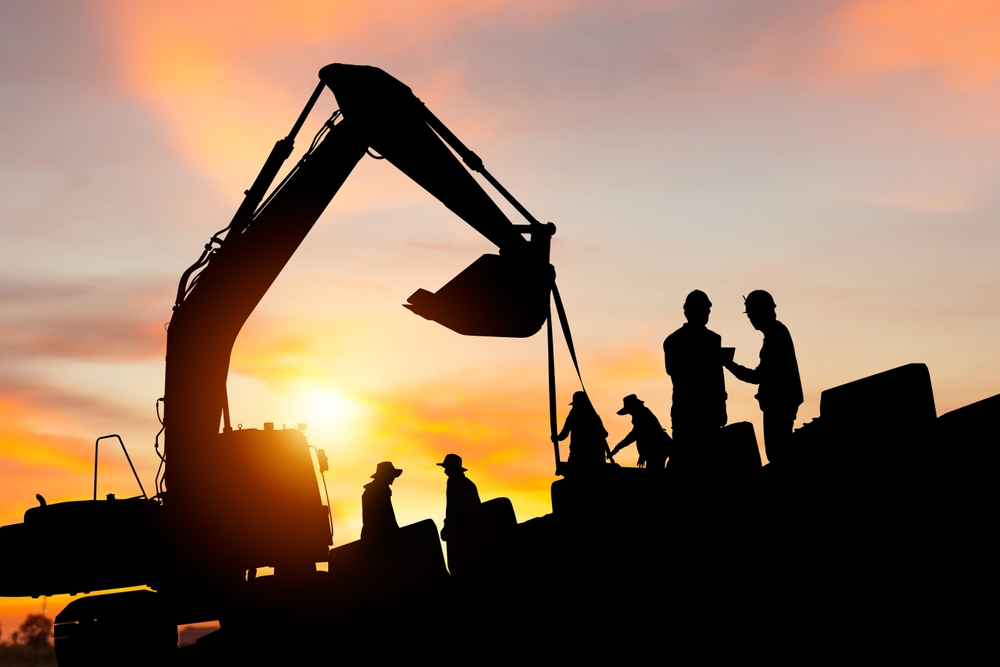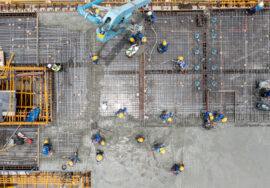The Benefits of Proactive Risk Management in Construction
The Benefits of Proactive Risk Management in Construction

Proactive risk management is an essential component of successful construction projects. In an industry that is inherently complex and prone to numerous risks, taking steps to anticipate and mitigate potential challenges can significantly improve outcomes. Proactive risk management enables construction teams to minimize delays, control costs, enhance safety, and deliver projects that meet or exceed expectations.
What Is Proactive Risk Management?
Proactive risk management involves identifying potential risks before they become problems and implementing strategies to mitigate or avoid them. Unlike reactive risk management, which addresses issues only after they arise, proactive risk management seeks to prevent disruptions and challenges from occurring in the first place.
By continuously assessing potential threats throughout the lifecycle of a construction project, teams can safeguard their timelines, budgets, and overall project quality.
Key Benefits of Proactive Risk Management in Construction
1. Reduced Project Delays
One of the most significant benefits of proactive risk management is the ability to reduce delays. Construction projects are often subject to unexpected events, such as bad weather, supply chain issues, or design changes. By identifying these potential risks in advance and creating contingency plans, project managers can ensure that construction remains on schedule.
For instance, if the team anticipates delays due to bad weather, they can schedule weather-sensitive tasks during more favorable seasons or prepare temporary protective structures.
2. Improved Budget Control
Budget overruns are a common issue in construction. With proactive risk management, teams can better anticipate and account for potential cost increases. By identifying high-risk areas such as material price fluctuations, labor shortages, or unforeseen site conditions, project managers can allocate contingency funds accordingly and monitor expenses more effectively.
This ensures that projects remain financially viable and helps avoid surprises that can negatively impact profitability.
3. Enhanced Safety Measures
Safety is a top priority in the construction industry, and proactive risk management plays a crucial role in protecting workers. Identifying potential hazards early, such as unsafe equipment or structural risks, allows teams to implement safety protocols and ensure compliance with regulations. This reduces the likelihood of accidents, injuries, and costly litigation.
Additionally, proactive safety measures contribute to a more productive workforce, as workers are more confident and efficient when safety concerns are addressed.

4. Better Quality Control
Proactive risk management can improve the overall quality of construction projects. By planning ahead and foreseeing potential design flaws, material defects, or workmanship issues, teams can ensure that construction adheres to high-quality standards.
For example, conducting regular inspections and audits throughout the project can catch potential issues early, allowing for corrective measures before they escalate into larger problems.
5. Greater Client Satisfaction
Clients expect timely, budget-conscious, and high-quality results. Proactively managing risks allows construction teams to meet these expectations by minimizing disruptions, staying within budget, and delivering the project on time. When risks are well-managed, clients are more likely to be satisfied with the outcome, resulting in positive relationships, repeat business, and referrals.
Steps for Implementing Proactive Risk Management in Construction
1. Risk Identification
The first step is identifying all potential risks that could affect the project. This includes financial, environmental, legal, and technical risks. Involving key stakeholders, such as architects, engineers, and contractors, ensures a comprehensive view of potential issues.
2. Risk Assessment
Once risks are identified, they need to be assessed in terms of their likelihood and potential impact. This allows project managers to prioritize risks and focus on those with the highest probability of occurring and the greatest potential to disrupt the project.
3. Risk Mitigation
For high-priority risks, project teams should develop strategies to mitigate or avoid them. This can include measures such as adjusting schedules, securing additional resources, or ensuring compliance with safety regulations. Mitigation strategies should be incorporated into the project plan and regularly reviewed as the project progresses.
4. Continuous Monitoring
Risk management doesn’t stop once the project begins. Proactive risk management requires continuous monitoring of the project’s progress and potential risks. Regular meetings, inspections, and updates to the risk register help ensure that new risks are identified and addressed promptly.
Proactive Risk Management Tools in Construction
1. Building Information Modeling (BIM)
BIM technology allows teams to visualize and simulate different aspects of a construction project. By identifying potential design or structural issues early in the planning phase, BIM helps mitigate risks and improve coordination among team members.
2. Risk Register
A risk register is a document used to track identified risks, their potential impact, likelihood, and the mitigation strategies in place. It is continuously updated throughout the project to reflect new risks and the status of existing ones.
3. Project Management Software
Construction project management software allows teams to track timelines, budgets, and tasks in real time. These tools provide valuable data for monitoring risk factors such as delays or cost overruns, enabling teams to adjust plans as needed.
4. Safety Management Systems
A safety management system helps track and address safety risks on-site. It includes procedures for conducting inspections, reporting incidents, and implementing corrective actions. Proactively managing safety risks reduces the chances of accidents and injuries.
Case Study: Proactive Risk Management in the Construction of the Panama Canal Expansion
The Panama Canal Expansion Project is an example of how proactive risk management can ensure the successful delivery of a complex construction project. Given the scale and technical challenges of the project, the construction team implemented a proactive risk management strategy that involved identifying potential delays, budget risks, and environmental concerns from the outset. By continuously assessing risks and adjusting their plans accordingly, the team was able to complete the project while maintaining safety and quality standards.
Conclusion
Proactive risk management is an indispensable part of any construction project. By identifying and mitigating risks early, teams can minimize delays, control costs, enhance safety, and improve project quality. The benefits of this approach are clear: smoother project execution, better client satisfaction, and ultimately, a more successful construction project.
For more information on how proactive risk management can improve your construction projects, contact us today.
External Resources for Legal Guidance
Benefits of Proactive Risk Management in Construction
Read more related articles to enhance your knowledge and make informed decisions
10 Essential Steps in the Building Construction Process
How to Choose the Right Materials for Your Construction Project








